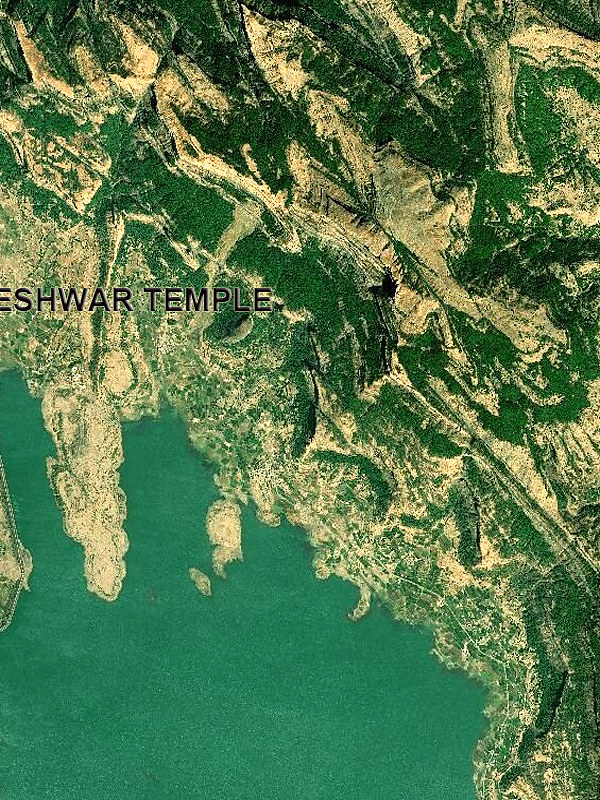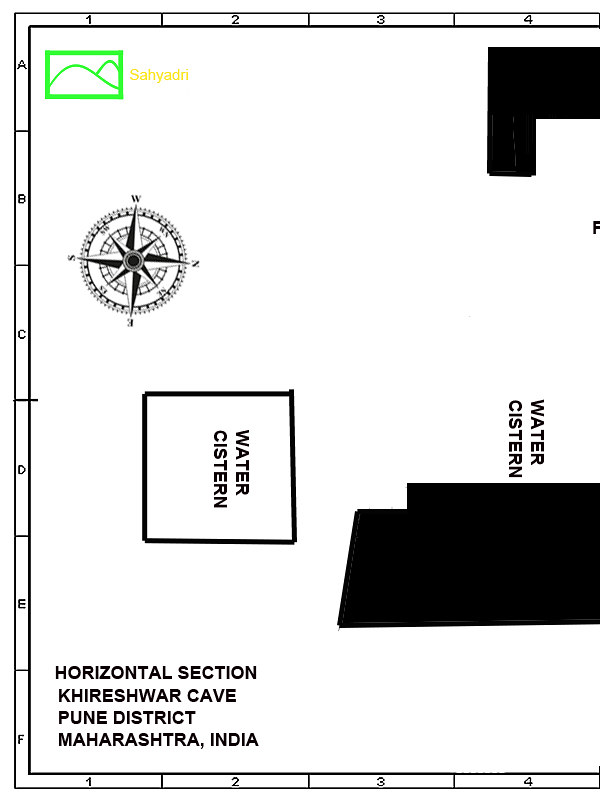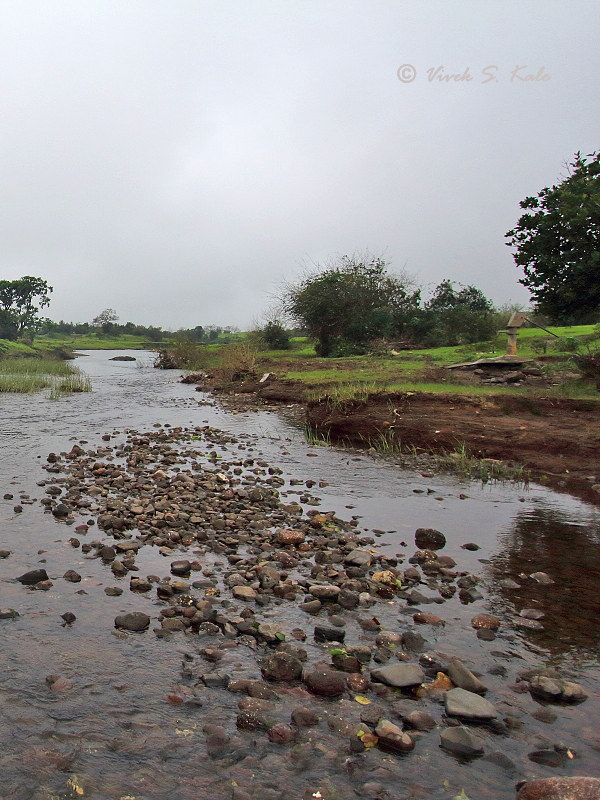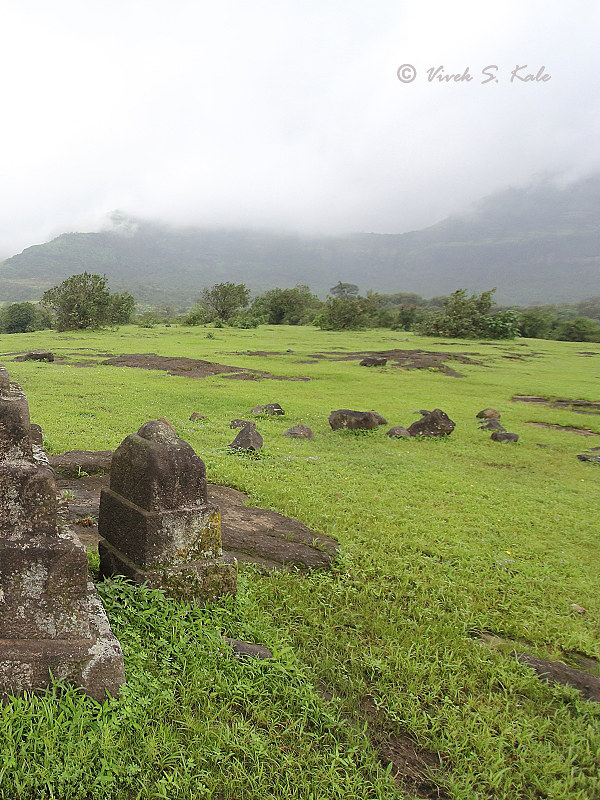|
Me Sahyadri |
|
November 2019 |
|
Volume 6, number 11, # 88 |
|
Khireshwar cave |
Please use minimum 1280 pixel horizontal screen resolution for viewing. Please be patient while all the images in webpage are loaded. Please do not use the images for any commercial use without permission. Text in Marathi and English is not exact translation. Please give sufficient time to allow the photographs to load. Special thanks to Ninad Bartakke and Saili Palande Datar and all those who helped me during the compilation and for the help and guidance during the activity. |
|
|
|
|
देशाची आर्थिक प्रगती व्हावी असे सर्व नागरिकांना वाटणे सहाजिक आहे. अर्थकारणामुळे मिळणारा रोजगार, समृद्धी यासाठी सर्वांनाच आर्थिक प्रगती हवी हवीशी वाटते. आर्थिक प्रगती होताना, त्याचा दिर्घकाळात समाजावर, निसर्गावर, वातावरणावर दुष्परिणाम होणार नाही याची काळजी घेणे महत्वाचे आहे. मनुष्याच्या भावी पिढ्यांना पाणी, शुद्ध हवा, योग्य वातावरण मिळत रहावे अशी भावना मनात रुजणे महत्वाचे आहे. वाढत्या आर्थिक प्रगतीमुळे नैसर्गिक संपदेवर ताण येतो. प्रगतीसाठी प्रदुषण होते. जंगले, माळराने, व इतर अधिवास नष्ट होतात. वसुंधरेवर रहाणाऱ्या इतर जीवांचा मात्र मनुष्य फारसा विचार करत नाही. आर्थिक प्रगती करताना, मनुष्य निसर्गाची हानी करत आहे. मुळताच माणसाला निसर्गाचे महत्व समजणे हे सध्याच्या आपल्या प्रगत जीवनशैली मुळे अवघड झाले आहे. आर्थिक प्रगती, समाजाची प्रगती व निसर्ग संपदेची निगा, यांचा समतोल राखणे काळाची गरज आहे.
सह्याद्री (पश्चिम घाट) हा एक नैसर्गिक संपदेचा, वैविध्यतेचा, भौगोलिक व ऐतिहासिक ठेवा आहे. वाढत्या मानवी अतिक्रमणाचा, सह्याद्रीच्या विविध घटकांवर होणारा दुष्परिणाम भविष्यात आपल्यालाच धोका निर्माण करेल, यात शंका नाही. शुद्ध पाणी, हवा व उर्जा, भावी पिढीला मिळण्यासाठी, नंद्यांचे उगम असलेला सह्याद्री व त्याभागातील जंगले टिकवणे महत्वाचे आहे. सह्याद्रीच्या महत्वाच्या घटकांचे महत्व छायाचित्रांद्वारे प्रकट करण्याचा मी येथे प्रयत्न केला आहे. येथील पक्षी, प्राणी, वनस्पती, अधिवास, किल्ले व लेणी अशा विविध विषयांबद्दल आपण समजुन घेऊ.
|
|
As the economic development has taken the center stage, the balance between the environmental sustenance and socio economic development will be under the scanner. As most experts with balanced views have proclaimed, Indian wildlife and ecological system sustenance will be under threat, unless precautions are taken with the help of appropriate research and long term national interests. As we encounter the economic development, many habitats which indirectly or directly help sustainable development will be damaged. The awareness to gauge the success by sustainable development and not by year to year growth is a distant dream any environmentalist will assume in current scenario.
Western ghats, or Sahyadri as we all call it as, is a treasure trove of spectacular landscapes, biodiversity, flora, fauna, some amazing geological wonders and man made monuments. With the increasing pressure from human encroachment, all these elements are under stress and in turn are under depletion. Western ghats should be left untouched by human beings, to protect their future generations from getting short of resources, such as water, energy and clean air. The important elements of western ghats, which need protection are highlighted in the new version of Photo journal, Me Sahyadri Magazine.
|
|
|
| |
 
|
| |
| Me Sahyadri – November 2019
|
| |
|
|
| |
  |
| The banner has been published here to improve the awareness of the trekkers and tourists visiting the various mountain forts, mountains in north western ghats. Please avoid accidents, by following good outdoor ethics such as no swimming in cisterns at mountain forts, no rock climbing without proper technical equipment and expertise. Please do not adventure, trek with any group or individually without understanding the risks associated. The frequency of the solo trekker fatalities have increased recently. Please strictly avoid solo treks. Please also avoid treks to mountains in large commercial groups, as it leads to damage to biodiversity of these high elevation ecological islands. Please respect the wildlife and biodiversity of the region. This has become more important as the ever increasing human interference is leading to severe damage to fragile ecosystems. Please be aware of the wildlife and biodiversity of the mountains before visiting these mountains. Please follow outdoor ethics. Follow ASI and Forest department rules. The concept of use of symbols for outdoor ethics was conceived and designed by "Sahyadri Trekker Bloggers Group". |
| |
|
|
| |
  |
| |
| 1. Khireshwar cave region map, Maharashtra, India |
| |
|
|
खिरेश्वर गाव पुणे जिल्ह्याच्या जुन्नर तालुल्यात आहे. खिरेश्वर जुन्नर पासुन २७ किलोमीटर अंतरावर तर पुणे शहरापासुन अंदाजे १२० किलोमीटर अंतरावर आहे. खिरेश्वर गाव दखनच्या पठारावर घाटमाथ्य्वार हरिश्चंद्रगडाच्या डोंगरारांगेच्या पायथ्याशी वसलेले आहे. हरिश्चंद्रगड डोंगरारांगेच्या उत्तरेला गोदावरी खोरे तर दक्षिणेला भीमा नदीचे खोरे असुन ही रांग अंदाजे ४५ किलोमीटर आंतरापर्यंत पसरलेली आहे. या डोंगररांगेच्या दक्षिणेला हटकेश्वर डोंगररांग पश्चिम पुर्व पसरलेली आहे. खिरेश्वर गावाजवळ काळु आणि पुष्पावती नदयांचा उगम होतो. हरिश्चंद्रगड आणि हटकेश्वर या दोन डोंगररांगांच्या मधल्या पठारावरुन पुष्पावती नदी पुर्वेकडे वाहते. काळु नदी पश्चिमेकडे कोकणात उतरते. पुष्पावती नदी नंतर कुकडी आणि त्यातुन भीमेला मिळते. तर काळु नदी कोकणात उल्हास नदीला जाऊन मिळते.
|
|
Khireshwar village is located in Junnar tehsil in Pune district in Maharashtra state in India, at about 27 km north west of Junnar and about 120 km from Pune city center. Khireshwar is located on the deccan plateau at the base of the Harishchandragad range. The hill range is a part of the extension of the Sahyadri main ridge on the Deccan plateau divides the Godavari and Bhima river basins. Spread in west–east orientation, this hill range, which is about 45 kilometer in length, spread to the east from the Harishchandragad at western ghat ridge. South of this hill range there is a parallel Hatakeshwar range. Between Harishchandragad hill range and Hatakeshwar and Harishchandragad hill ranges there is a basin in which two rivers originate close to Khireshwar. The River Kalu flows westwards towards Konkan. The river Pushpavati flows towards east and meets Kukadi and eventually Bhima river.
|
|
|
| |
  |
| |
| 2. Khireshwar cave region map, Pune district, Maharashtra, India |
| |
|
|
जुना व्यापारी घाटमार्ग माळशेज घाटात मार्गे कोकणातुन घाटावर म्हणजे दख्खन च्या पठारावर येतो. घाटमाथ्यावर खुबी आणि खिरेश्वर गाव आहेत. पुर्वेकडच्या व्यापारी बाजारपेठांपासुन हा मार्ग कल्याण, आणि सोपारा या बंदरांकडे जात होता. आज सुद्धा इथे झालेल्या नविन घाटरस्त्यामुळे कल्याण आणि अहमदनगर या शहरांना जोडणारा मार्ग आहे. पुष्पावती नदीचे खोरे सुपिक आहे.
|
|
The ancient trade route climbs up the western ghat ridge from the Konkan over to the Deccan plateau at Khubi. The ghat is known as Malshej ghat. Once atop Deccan plateau at Khubi, the trade route is aligned parallel to Pushpavati river. This ancient trade route was used to transport the goods from the eastern economic centers on the Deccan plateau to Kalyan and Sopara ports on the west coast of India. Today the modern Mumbai-Ahmednagar road passes through the same Pushpavati river basin, which was used for ancient trade in the past. The Pushpavati hill range is surrounded by fertile land.
|
|
|
| |
  |
| |
| 2a. Khireshwar cave Layout, Pune district, Maharashtra, India |
| |
|
|
| |
  |
| |
| 3. Khireshwar cave, Khireshwar village, Pune district, Maharashtra, India |
| |
|
|
खिरेश्वर दोन नद्यांच्या उगमस्थानी स्थित आहे आणि प्राचीन व्यापार मार्गाच्या जवळ आहे. या शिवाय ते हरिश्चंद्रगड खिंडीच्या जवळच आहे, ज्यास टोलार
खिंड म्हणतात. अहमदनगर जिल्ह्यातील अकोला तालुक्यात जाण्यासाठी हरिश्चंद्रगड डोंगरारांग ओलांडण्यासाठी टोलार खिंडीचा वापर केला जातो. या खिंडीतून सुमारे 20 कि.मी.पर्यंत प्रदक्षिणा टाळता येते. खिरेश्वर अर्थातच प्राचीन मंदिर असलेल्या हरिश्चंद्रगड किल्ल्याच्या पायथ्याजवळ आहे. नागेश्वर मंदिर काळू नदीच्या काठावर वसलेले आहे. या लहान मंदिरा जवळच एक लहान गुहा संकुल देखील आहे.
|
|
Khireshwar is located at the origin of two rivers, and is close to ancient trade route. Apart from these aspects it is also located close to the pass in Harishchandragadad range, called as Tolar khind. Tolar pass is used to cross the Harishchandragadad range to enter Akola Taluka of Ahmednagar district. This pass eliminates need to circumnavaigate by almost 20 km. Khireshwar is of course at the base of Harishchandragad fort, which has ancient temple. The Khireshwar cave is located on the banks of Kalu river, which after a travelling a mile from its place of origin, falls in to the gorge over the main ridge to enter Konkan. This small temple is also accompanied by a small cave complex nearby. In this photoessay ,let us see some details of the rock temple of Nageshwar.
|
|
|
| |
  |
| |
| 4. Khireshwar cave, Khireshwar village,, Pune district, Maharashtra, India |
| |
|
|
खिरेश्वर च्या लेणी डोंगरात कोरलेल्या नाहीत. या लेणी जमिनीतल्या कातळात कोरलेल्या आहेत. अशा प्रकारचे भुमिगत लेणे पुण्यात पाताळेश्वर ला पहावयास मिळते. खिरेश्वर च्या लेण्यात एक मोठा मंडप आहे. या मंडपात खांबांच्या दोन रांगा आहेत. यातील एक रांग लेण्याच्या दर्शनी भागात आहे. दुसरी रांग पहिल्या रांगेला समांतर लेण्याच्या आत आहे. प्रत्येक रांगेत ४ पुर्ण आणि २ अर्ध खांब आहेत. पुर्वेकडे एक खोली कोरलेली आहे. लेण्यासमोर लगतच एक पाण्याचे टाके आहे. तर अजुन एक टाके लेण्यासमोरच्या पटांगणात आहे. लेण्याच्या वर कातळावर चार स्मारक शिळा आहेत.
|
|
These caves are not located on the hill. The cave is partially subterrain cave unline most of the caves normally we see above the ground level. Another such example of subterrain cave is Pataleshwar cave in Pune city. The Khireshwar cave has a large hall with a row of pillars in front and another parallel row of pillars inside the cave. Each row has four full pillars and 2 semi pillars. On the east side of the cave hall mandap, there is a small cell, which probabaly was meant to house the deity. One of the possibilities is that the rocks required for Nageshwar temple built nearby has been sourced from this cave, meeting dual purpose of making the cave and making the temple at the same place same time. There is a water cistern immediately at the front of the cave. There is another water cistern at some distance in the front. Atop the caves there are few Smarak shilas.
|
|
|
| |
  |
| |
| 5. Khireshwar cave, Khireshwar village, Pune district, Maharashtra, India |
| |
|
|
| |
  |
| |
| 6. Khireshwar cave, Khireshwar village, Pune district, Maharashtra, India
|
| |
|
|
| |
  |
| |
| 7. Khireshwar cave, Khireshwar village, Pune district, Maharashtra, India
|
| |
|
|
| |
  |
| |
| 8. Khireshwar cave, Khireshwar village, Pune district, Maharashtra, India
|
| |
|
|
| |
  |
| |
| 9. Khireshwar cave, Khireshwar village, Pune district, Maharashtra, India
|
| |
|
|
| |
  |
| |
| 10. Khireshwar cave, Khireshwar village, Pune district, Maharashtra, India
|
| |
|
|
| |
  |
| |
| 11. Khireshwar cave, Khireshwar village, Pune district, Maharashtra, India
|
| |
|
|
| |
  |
  |
| |
| 12. Khireshwar cave, Khireshwar village, Pune district, Maharashtra, India
|
| |
|
|
| |
  |
| |
| 13. Khireshwar cave, Khireshwar village, Pune district, Maharashtra, India
|
| |
|
|
| |
  |
| |
| 14. Khireshwar cave, Khireshwar village, Pune district, Maharashtra, India
|
| |
|
|
| |
  |
| |
| 15. Khireshwar cave, Khireshwar village, Pune district, Maharashtra, India
|
| |
|
|
| |
  |
| |
| 16. Khireshwar cave, Khireshwar village, Pune district, Maharashtra, India
|
| |
|
|
| |
  |
| |
| 17. Khireshwar cave, Khireshwar village, Pune district, Maharashtra, India
|
| |
|
|
| |
  |
| |
| 18. Khireshwar cave, Khireshwar village, Pune district, Maharashtra, India
|
| |
|
|
| |
 |
| |
|
|
| ***********
|
| |
|
|
| |
|













































